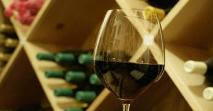By Thomas Sherwood
 Going to a wine tasting party can be a fun and enjoyable experience for everyone. However, most people don't attend because they have fear about not knowing how to act in such parties and afraid that they will offend someone or be embarrassed by not knowing how to taste wine.
Going to a wine tasting party can be a fun and enjoyable experience for everyone. However, most people don't attend because they have fear about not knowing how to act in such parties and afraid that they will offend someone or be embarrassed by not knowing how to taste wine.
Basically, the basics of wine tasting are actually quite simple. You don't need to have formal training and everyone can do it. By the time you finish reading this article, you will be well on your way in becoming a wine taster and you will be ready enough to attend wine tasting parties or even go on a wine tasting vacation in some of the most prominent vineyards and wineries in the world.
As far as etiquette is concerned, the ladies are usually served before the gentlemen. In most wine tasting parties, you can expect to be served with room temperature bottled water. The water is to rinse your mouth between tastings in order for your palate to be clean for the next wine. Cold water is not served as cold water will shock your taste buds which can overall affect the taste of the wine.
Also, some wine tasting parties serve unsalted and unflavored bread or crackers. This also helps in palate cleansing, which will also get your palate ready for the next wine tasting.
When tasting wine, it is important that you should always hold the wine glass by the stem and not cup the bowl in your palm. The purpose of this is that it helps in preventing you to heat the wine with the warmth of your hands. You have to remember that this will also affect the overall taste of the wine.
It is also very important that when you attend wine tasting parties, you shouldn't wear strong smelling perfumes or colognes and even after shave. The scent of the perfume will overwhelm the bouquet or the smell of the wine, thus, affecting the taste of the wine. You will not be the only one affected by this, but also other tasters. So, be polite and don't wear strong smelling perfume or other scents.
It is also important that you shouldn't smoke, chew gum, and mints before and during the wine tasting event. This can have an effect on your taste buds and you will not be able to fully enjoy the real flavor of the wine.
Tasting the wine doesn't just involve putting the wine in your mouth and roll it around your tongue a couple of times before spitting or swallowing. You have to remember that wine tasting is all about the wine. It is about the color of the wine, the smell or the bouquet, and of course, the taste.
The first step in tasting wine is by taking a look at its color. The glasses served should always be clean and clear in order for you take a good look at the wine. The tables should be covered with white linen table cloth in order for you to see the wine's color more clearly. You have to remember that white wines aren't always white. It may have a yellow, green and even brown color. For red wines, you will observe that it also has different shades of red. The lighter the color of the red wine is, the older it is.
The color of the wine will also indicate the age or the flavor. Try doing a rim test to look at the color of the wine. Just tilt the glass and look at the wine. If it is purplish in color, it indicates that the wine is young. If it is brownish, it means that it is an older wine.
The next step is to smell the wine. Swirl the wine around the glass to expose the wine to the air, position the glass close to your nose and inhale deeply. Swirling also releases the flavor of the wine. You have to remember that the wine may have been in the bottle for six months to many, many years. By swirling the wine, you will release the flavors. It's like cooking at home where you stir the food in order for you to blend the flavor.
Finally, you now need to taste the wine properly. Don't gulp the wine down. Just take small sips and roll the wine around your tongue. You have tor remember that there are three steps in actual tasting, which is the first impression, the taste and the aftertaste.
These are the steps in tasting wine. So, the next time you are invited to attend a wine tasting party, you will be able to feel more confident as you will know what to do.
Thomas Sherwood is a former Sgt in the United States Marine Corps & owner of Sherwood Locksmithing of La Vergne TN.
Discover all you want and need to know about wine at, please visit The Absolute Beginners Guide To Wine
Article Source: http://EzineArticles.com/?expert=Thomas_Sherwood
Read more...
 This work of art is an abstract reinterpretation of the human heart, complete with its atriums, ventricles, and an aorta for a spout.
This work of art is an abstract reinterpretation of the human heart, complete with its atriums, ventricles, and an aorta for a spout. 






